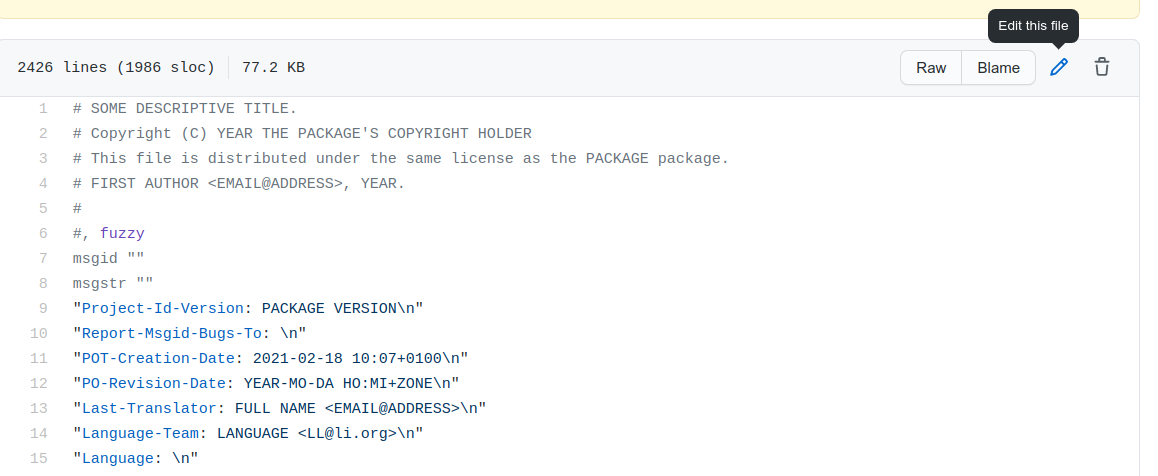Translations
Can you help us to translate this platform?
Have you spotted an error in the translation? The EU-Citizen.Science platform is built by the community for the community. We would be very thankful if you could help us correct these errors.
All translations can be found in github, inside this folder:
In each of the subfolders you will see files with 'po' and 'mo' extensions. You can improve the translation in one language by editing the related 'po' file (see next section on how to edit po files).
Here are direct links to each of the 'po' files.
How to edit po files
There are two ways to edit po files:
- Option #1 - You have a Github account: In this particular case maybe you have enough experience to send us translation improvements through GitHub. If not, the easy way is to use the GitHub online editor:
- (1) Go to your desired language to translate using the links to po files provided above
- (2) Edit the file online by clicking on the pencil icon
 Take a look at the next section to understand django.po structure
Take a look at the next section to understand django.po structure
- (3) Once you are done editing, click on Propose changes

- (4) Click on "Create pull request"

- (5) Click en "create pull request" again

- Option #2 - You do not have (and you do not want to have) a GitHub account: In this case, the objective is to download your desired django.po file, edit it (using your favourite file editor, and send it back to us by email to vval (at) bifi.es
- (1) Go to your desired language to translate using the links to po files provided above
- (2) Right click on Raw to download the file in raw format to your computer: First, right click on Raw. Second, select Save link as.... Third, when saving add txt extension to the filename.

- (3) Edit the file using your favourite text editor. Take a look to the next section to undestand django.po structure
- (4) Send it back to us by email to vval (at) bifi.es
The structure of the po files
...
...
#: .\src\accounts\forms.py:32 .\src\templates\base.html:69
#: .\src\templates\registration\password_reset_complete.html:18
msgid "Log in"
msgstr "Iniciar sesión"
#: .\src\accounts\forms.py:50
msgid ""
"We see that your email address is in our database, but that you have not yet "
"confirmed your address. Please search for the confirmation email in your "
"inbox (or spam) to activate your account"
msgstr ""
"Su correo electrónico se encuentra en nuestra base de datos, pero Ud. no "
"haconfirmado todavía esta dirección. Por favor, busque el correo de "
"confirmaciónen su bandeja de entrada (o spam) para activar su cuenta"
...
...
So, as you can imagine, all that you need to do is to provide a translation of the message that follows msgid inside msgtr. For example, in the above example, Log in is translated into Iniciar sesión in Spanish.
Be careful! msgid is the part in English that you have to translate, you shouldn't change it since it identifies the text string that we want to translate.
Many text fragments have already been translated, you can check them to see if they are correct and if not, change them.
In the next example, we are going to translate 'Can participate at home'. We fill msgstr with the translation.


In translations where there are several lines, it must be respected that each line begins and ends with quotation marks

In some cases, a strange symbol can appear, these symbols must be left as they are for it to work correctly

Remember, once you have finished translating, you can commit on github if you have permission or send us the file by email and we will take care of updating the platform.
Thank you so much!